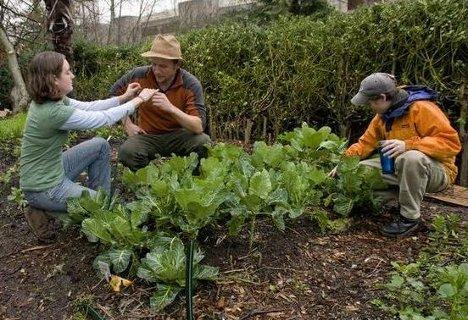
We've scratched the surface of Sierra magazine's Cool Schools list on Treehugger before, but this time I've decided to dig into one of the schools so we can learn more about what makes it so green.
The University of Washington (UW) topped the list this year, and Aubrey Batchelor, Program Coordinator in UW's Environmental Stewardship and Sustainability office, said green programs and projects are commonplace at UW.
"One thing we talk about at UW is creating responsible global citizens," she said. "As part of our mission at the university, we try to educate the students and provide practical experiences they can bring out into the world with them.'One example is UW graduate student Daniel Brody, who's studying public affairs and forest resources. Brody received a Campus Sustainability Fund grant to increase composting on campus and identify a strategic communication plan for campus entities who work to promote compost efforts and raise awareness on campus.
"Staff at UW is really committed to sustainability and they respect the students' expertise and what they can bring to the table," he said. "When you have people like that it makes it easy to push sustainability efforts on campus. I've been really impressed with the willingness of university employees to be open with the student population and support the student efforts that are going on."
And UW's students and employees are busy being green - here are just a few highlights of their sustainability projects:
-The Campus Sustainability Fund: Batchelor says this fund was created by and for students. "Students petitioned for a whole year to get it established and had 5,500 student signatures," she explained. "There were more signatures on the petition to establish the Campus Sustainability Fund than there were votes in student elections."
Last year was the first year for the fund, which is comprised of seven students who choose how to spend the funds, with faculty guidance. Example projects include a 1-acre expansion of the UW farm, which grows some of the food served on campus.
-A partnership with Seattle TILTH: TILTH is a local non-profit organic gardening group. TILTH has a great program for at-risk youth, said Batchelor, and the UW Farm is partnering with them to teach at-risk youth about urban farming.
-The Biodiversity Greenwall: This fund helps save energy on campus and includes an internship in Capital Projects Office to do LEED performance analysis. "This allows students to get hands-on experience while doing their degree," said Batchelor.
-The Pacific Northwest Smart Grid Project: This is a five-year project in five Pacific Northwest states involving 12 utility companies. "Basically what they're doing is giving a makeover to how we manage energy in the northwest, including installing meters to measure energy at various points on the grid and figuring out ways to transport energy more efficiently," Batchelor said.
"There's a lab on campus that's been testing out energy technologies, and students are researching and testing them as part of their education. We're helping drive the shape of new technologies.
-The Seattle Climate Partnership: UW is a founding member of the Seattle Climate Partnership, which involves Seattle businesses, local government, and others working to reduce greenhouse gas emissions.
-Green Buildings: Right now UW students and faculty at the school's College of Built Environments are designing and building what is claimed to be the greenest building in the world - the Cascadia Center for Sustainable Design & Construction.
And that's just a short list of campus projects.
"These kinds of things happen all the time across campus," said Batchelor. "We've got really solid connections with the community, and our students have input in the community. It's not just about making our campus as sustainable as we can, but reaching out to the community to make them as sustainable as possible."
Brody's using his UW sustainability experience in his current job, as a fellow with the Environmental Protection Agency (EPA).
"I'm working in the Region 10 office with the materials management the stewardship team," said Brody. "We're working with state and local partners and federal facilities to look at how we work with materials and their life cycle - from extraction through production and manufacturing, transportation, retain, use, and end of life of the product.
"It was really fortunate for me that I was working on (the campus compost) project while I was applying for the EPA job, and I think it was one of the biggest reasons I was chosen for this work. I'm grateful to UW for creating the Campus Sustainability Fund that funds projects that create leaders and helps when one is looking for jobs."